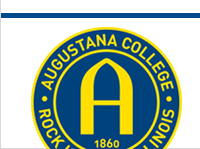Title
Beyond Access and Legitimacy: Training for Intercultural Communication in the Contemporary Workplace
Course
BUSN477 - Senior Inquiry
Document Type
Student Paper
Publication Date
Spring 4-27-2020
Disciplines
Business | Training and Development
Description, Abstract, or Artist's Statement
Significant research surrounds the concepts of intercultural, cross-cultural, and multicultural communication, both in academia and the workplace. The concepts are nearly identical, pointing to an ability to understand and adapt to the norms of a different cultural perspective. Despite the increasing cultural diversity of the United States, many firms continue to treat “diversity” from a legalistic or competitive perspective. This paper proposes a model for training employees in a firm to enhance their own intercultural communication skills to elevate the firm into a cultural mindset of learning. The model follows five cyclical steps: Assess, Design, Motivate, Implement, and Results. By putting an emphasis on cultural intelligence through a holistic program and continuous improvement, this model aims to both motivate and educate employees so they are better equipped to work with coworkers who might look, think, or act differently in a positive manner. The paper then considers the practical implications of such a model, such as increased metacognitive and behavioral cultural intelligence, increased participation by managers, and increased retention rates of diverse talent. Lastly, the paper concludes by recognizing the limitations of the model, as it may not work in every industry and requires a pre-established value of diversity in the firm.
Augustana Digital Commons Citation
Hammond, Jessica. "Beyond Access and Legitimacy: Training for Intercultural Communication in the Contemporary Workplace" (2020). Business Administration: Student Scholarship & Creative Works.
https://digitalcommons.augustana.edu/busnstudent/4
Creative Commons License

This work is licensed under a Creative Commons Attribution 4.0 License.
